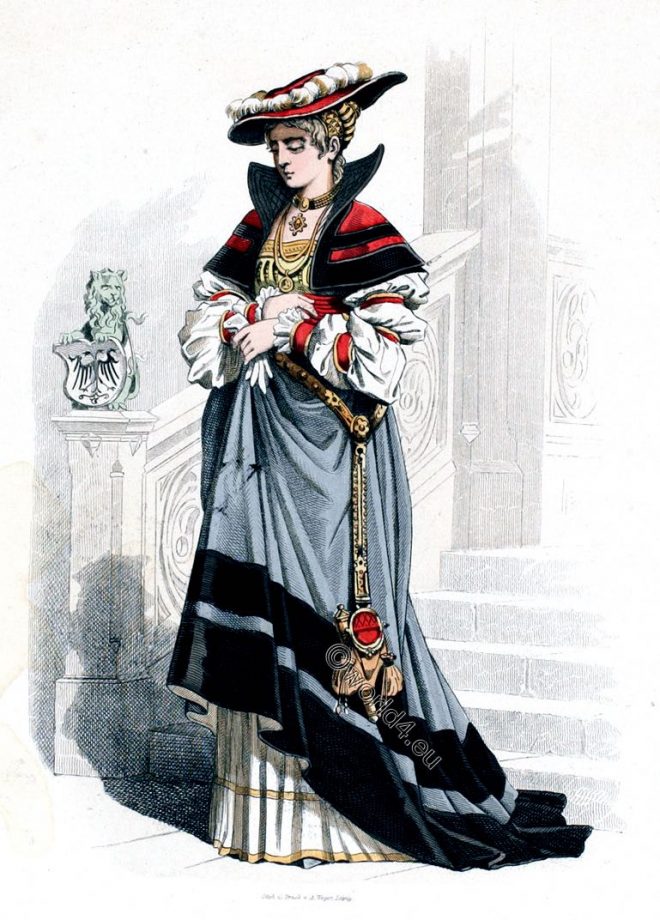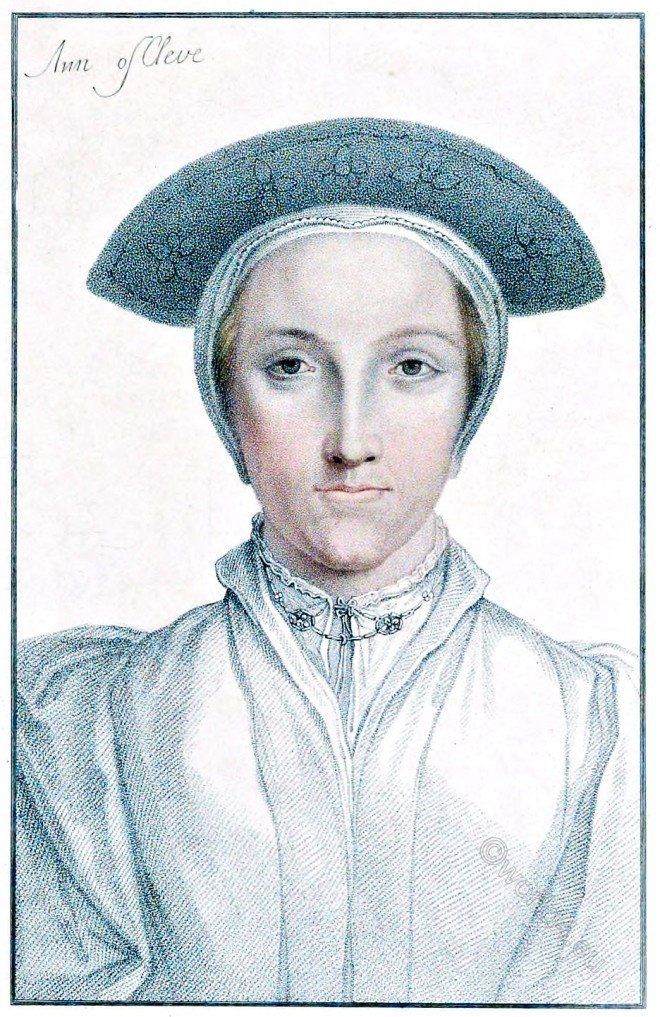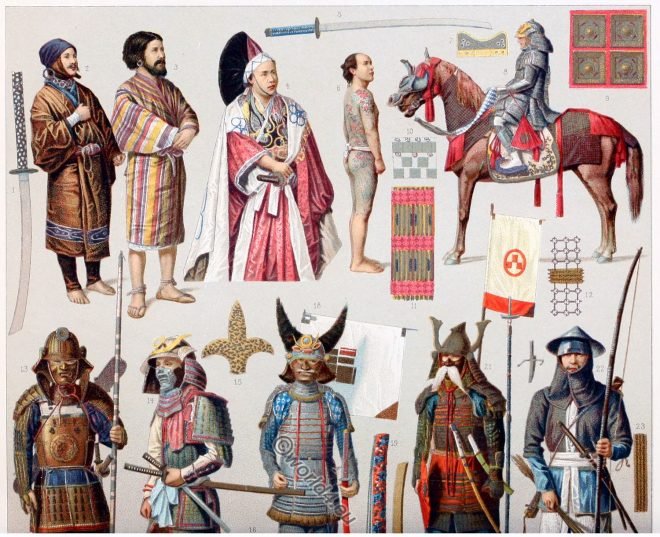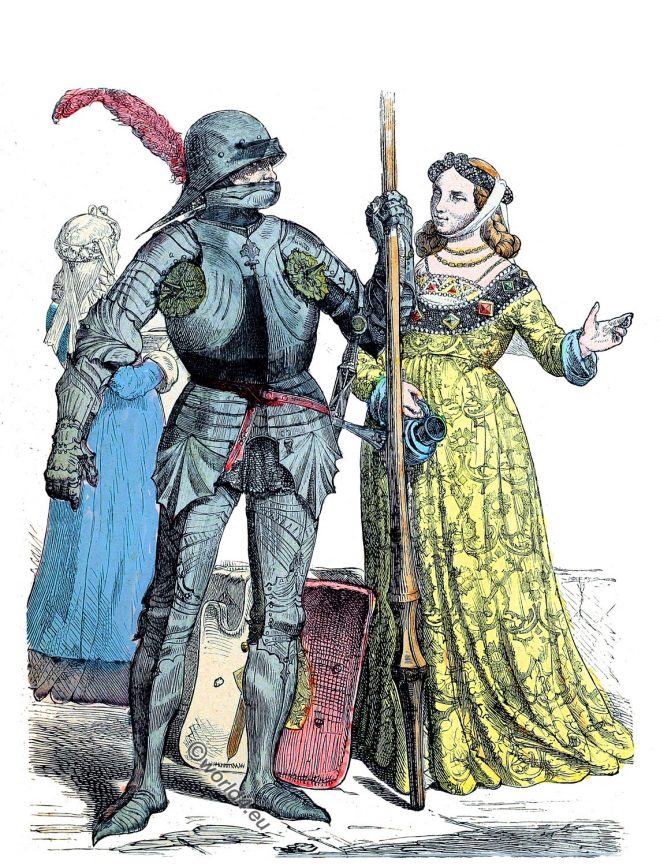German Renaissance fashion of a noblewoman from the beginning of the 16th century, with a red beret, long dress with train over a white underdress of camelot and a partlet of red silk with black velvet.
Category: Nobility
Anne of Cleves, fourth wife of the English King Henry VIII.
Anne of Cleves (1515 – 1557) was the fourth wife of the English King Henry VIII.
Japan. The natives and the conquerors. Ainu and Japanese. Weapons.
Japan. The natives and the conquerors. Ainu and Japanese. Combat and fencing armor. – Various Weapons. Soldiers, Craftsmen, Coolis.
England Anglo-Norman fashion history, 1087-1100.
Fashion and costume history in the Reign of William II, called William Rufus. Medieval England Anglo-Norman 1087-1100.
German knight and noblewoman of the 15th century.
German knight and noblewoman of the 15th century. Costume and fashion history of the middle ages. The history of costumes. XV. and XVI. century.
The dress and decorations of the Anglo-Saxons. 8th to 11th century
The dress of the Anglo-Saxons. 8th to 11th century
Sidney Herbert, 1st Baron Herbert of Lea. Probably painted in 1847.
Sidney Herbert, 1st Baron Herbert of Lea. This is probably the portrait painted in 1847, and exhibited at the Royal Academy the same year, the replica of which is now at Herbert House.
Sarah Baro Bolcher. An African Princess in Topsfield.
The princess, who gave her name as Sarah Baro Colcher, was given to Captain Dodge who brought her home to his sister, Mrs. Elizabeth Dodge Conant, in Topsfield, Essex County, Massachusetts, USA.
China. The Empress. A concubine and a servant. Furniture.
Empress of China with a diadem and long pendants. A concubine and a servant. Interior. Furniture.
German court costumes with bells. First half of the 15th century.
German court costumes c. 1430. Fashion of wearing bells in this manner originated in Germany, and was one of the many fanciful details introduced at the time of Anne of Bohemia’s marriage in 1383.










